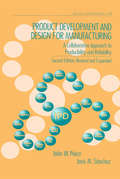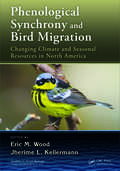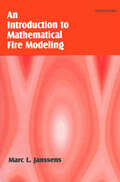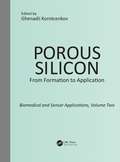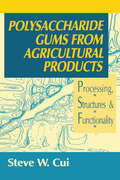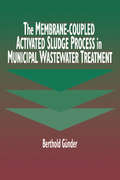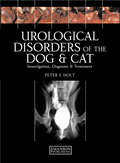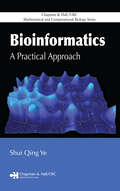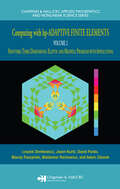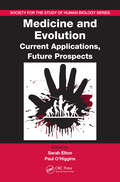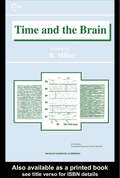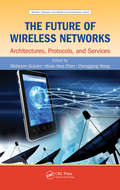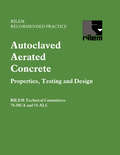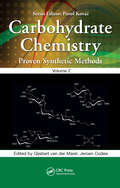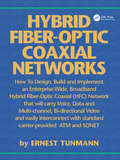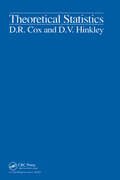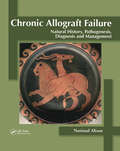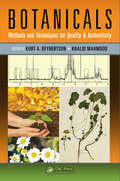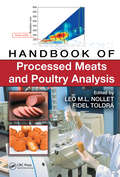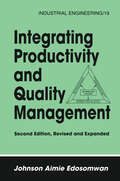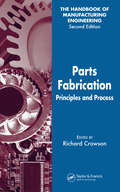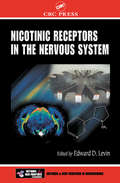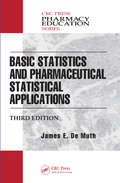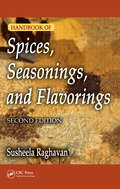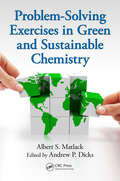- Table View
- List View
Product Development and Design for Manufacturing: A Collaborative Approach to Producibility and Reliability, Second Edition, (Quality and Reliability)
by John Priest Jose Sanchez"Outlines best practices and demonstrates how to desgin in quality for successful development of hardware and software products. Offers systematic applications failored to particular market environments. Discusses Internet issues, electronic commerce, and supply chain."
Phenological Synchrony and Bird Migration: Changing Climate and Seasonal Resources in North America (Studies in Avian Biology)
by Eric M. Wood Jherime L. KellermannBird migration is a well-researched phenological event. However, few studies in North America have investigated the effects of climate change and extreme weather on the relationships of migratory avian species and their seasonal resources. This is a critical gap in knowledge that limits our ability to prioritize management and conservation applicat
Introduction to Mathematical Fire Modeling
by Marc L. JanssensComputer simulation proves to be a valuable tool for the analysis and prediction of compartment fires. With the proper understanding and software, fire safety professionals can use modeling tools and methods to find answers to many critical questions relating to the prevention, investigation, and reconstruction of compartment fires.Thorough
Porous Silicon: From Formation to Application: Biomedical and Sensor Applications, Volume Two
by Ghenadii KorotcenkovPorous silicon is rapidly attracting increasing interest from various fields, including optoelectronics, microelectronics, photonics, medicine, chemistry, and biosensing. This nanostructured and biodegradable material has a range of unique properties that make it ideal for many applications. For example, the pores and surface chemistry of the mater
Polysaccharide Gums from Agricultural Products: Processing, Structures and Functionality
by Steve W. CuiThis new reference presents the most recent information on new and potential food hydrocolloids originated from agricultural products, including o yellow mustard gum o flaxseed gum o cereals (wheat, barley, oat, and corn)o psyllium fenugreek o soybean. Polysaccharide Gums from Agricultural Products: Processing, Structures and Functionality addresse
The Membrane-Coupled Activated Sludge Process in Municipal Wastewater Treatment
by Berthold GuenderThis book represents a milestone. It is the first overall presentation that summarizes the membrane-coupled activated sludge process (MCASP) in its entirety. The volume offers a thorough survey of current know-how, an explanation of the operational MCASP in municipal plants with full-scale membrane modules, and a description of its advantages and d
Urological Disorders of the Dog and Cat: Investigation, Diagnosis, Treatment
by Peter Holt Alasdair Hotson-MooreThis book provides veterinary practitioners and trainees with a concise, systematic guide to urological disorders affecting dogs and cats. The author focuses first on assessment of the patient and the main investigative techniques to reach a diagnosis. He then deals with the differential diagnosis, causes and treatment of conditions ranging from pr
Bioinformatics: A Practical Approach
by Shui Qing YeAn emerging, ever-evolving branch of science, bioinformatics has paved the way for the explosive growth in the distribution of biological information to a variety of biological databases, including the National Center for Biotechnology Information. For growth to continue in this field, biologists must obtain basic computer skills while computer spe
Computing with hp-ADAPTIVE FINITE ELEMENTS: Volume II Frontiers: Three Dimensional Elliptic and Maxwell Problems with Applications (Chapman & Hall/CRC Applied Mathematics & Nonlinear Science)
by Leszek Demkowicz Jason Kurtz David Pardo Maciej Paszynski Waldemar Rachowicz Adam ZdunekWith a focus on 1D and 2D problems, the first volume of Computing with hp-ADAPTIVE FINITE ELEMENTS prepared readers for the concepts and logic governing 3D code and implementation. Taking the next step in hp technology, Volume II Frontiers: Three-Dimensional Elliptic and Maxwell Problems with Applications presents the theoretical foundations of the
Medicine and Evolution: Current Applications, Future Prospects
by Sarah Elton Paul O’HigginsCan an evolutionary perspective be integrated in day-to-day practice and is it of value in medical education and training? If so, when and how? Highlighting exciting areas of research into the evolutionary basis of health and disease, Medicine and Evolution: Current Applications and Future Prospects answers these questions and more. I
Time and the Brain (Conceptual Advances in Brain Research)
by Ian MuehlenhausSince the days of Galileo, time has been a fundamental variable in scientific attempts to understand the natural world. Once the first recordings of electrical activity in the brain had been made, it became clear that electrical signals from the brain consist of very complex temporal patterns. This can now be demonstrated by recordings at the singl
The Future of Wireless Networks: Architectures, Protocols, and Services
by Mohesen Guizani Hsiao-Hwa Chen Chonggang WangThe exponential increase in mobile device users and high-bandwidth applications has pushed the current 3G and 4G wireless networks to their capacity. Moreover, it is predicted that mobile data traffic will continue to grow by over 300 percent by 2017. To handle this spectacular growth, the development of improved wireless networks for the future ha
Autoclaved Aerated Concrete - Properties, Testing and Design
by S. AroniThis is a comprehensive guide to autoclaved aerated concrete (AAC) for designers, specifiers, users and manufacturers. It provides a model code of practice for the structural use of AAC and provides designers with a complete guide to the structural use of AAC in structural applications in building.
Carbohydrate Chemistry: Proven Synthetic Methods, Volume 2 (Carbohydrate Chemistry: Proven Synthetic Methods)
by Gijsbert van der Marel Jeroen CodeeThe second volume in the series Carbohydrate Chemistry: Proven Synthetic Methods, Volume 2 offers a collection of synthetic procedures valuable to the practice of synthetic carbohydrate chemistry. The series takes an important and unique approach in that all described procedures have been independently verified as reliable and reproducible. With ed
Hybrid Fiber-Optic Coaxial Networks: How to Design, Build, and Implement an Enterprise-Wide Broadband HFC Network
by Ernest TunmannThis book covers the planning, design and implementation of hybrid fiber-optic coaxial (HFC) broadband networks in schools, universities, hospitals, factories and offices, whether they are in a single building or multiple campuses. Within the next few yea
Theoretical Statistics
by D.R. Cox D.V. HinkleyA text that stresses the general concepts of the theory of statistics Theoretical Statistics provides a systematic statement of the theory of statistics, emphasizing general concepts rather than mathematical rigor. Chapters 1 through 3 provide an overview of statistics and discuss some of the basic philosophical ideas and problems behind statistica
Chronic Allograft Failure: Natural History, Pathogenesis, Diagnosis and Management
by Nasimul AhsanThis book addresses one of the largest unmet needs in transplantation, the need to reduce late allograft loss. In the current era, it is reasonable to expect that most allografts will serve their recipients through their life span and death with preserved graft function the ultimate goal for all transplant recipients. However, long term allograft s
Botanicals: Methods and Techniques for Quality & Authenticity
by Ian MuehlenhausThe international trade in plants is growing steadily as the worldwide demand for natural and botanical raw materials increases. Customers value natural products and botanicals as "green" alternatives-safer ingredients for their families which also represent an environmentally and socially responsible choice for the planet. In order to build assura
Handbook of Processed Meats and Poultry Analysis
by Leo M.L. Nollet Fidel ToldráMuscle foods include a wide range of processed meats and poultry, and therefore represent an important percentage of total worldwide food consumption. The sheer volume of products and the variety of processes available makes analyzing them problematic. Co-Edited by Fidel Toldra - Recipient of the 2010 Distinguished Research Award from the American
Integrating Productivity and Quality Management (Industrial Engineering: A Series of Reference Books and Textboo)
by Johnson EdosomwanThis second edition details all productivity and quality methodologies, principles and techniques, and demonstrates how they interact in the three phases of the productivity and quality management triangle (PQMT): measurement, control and evaluation; planning and analysis; and improvement and monitoring. This edition features material on practical
Parts Fabrication: Principles and Process
by Richard CrowsonToday's fast-paced manufacturing culture demands a handbook that provides how-to, no-holds-barred, no-frills information. Completely revised and updated, the Handbook of Manufacturing Engineering is now presented in four volumes. Keeping the same general format as the first edition, this latest edition not only provides more information but makes i
Nicotinic Receptors in the Nervous System (Frontiers in Neuroscience)
by Edward D. LevinFeaturing a unique approach, Nicotinic Receptors in the Nervous System provides integrated coverage of research on neuronal nicotinic systems relevant to smoking addiction and cognitive dysfunction. By bringing together molecular and neurochemical applications, the book provides the key to understanding function and dysfunction of nicotinic systems and how they are significant for disease, addiction, and the development of novel drug treatments. The book presents readers with the basic mechanistic background for these treatments as well as the functional assessment necessary to determine therapeutic effects.
Basic Statistics and Pharmaceutical Statistical Applications (Pharmacy Education Series)
by James E. De MuthBuilding on its best-selling predecessors, Basic Statistics and Pharmaceutical Statistical Applications, Third Edition covers statistical topics most relevant to those in the pharmaceutical industry and pharmacy practice. It focuses on the fundamentals required to understand descriptive and inferential statistics for problem solving. Incorporating
Handbook of Spices, Seasonings, and Flavorings
by Susheela RaghavanAn A to Z Catalog of Innovative Spices and FlavoringsDesigned to be a practical tool for the many diverse professionals who develop and market foods, the Handbook of Spices, Seasonings, and Flavorings combines technical information about spices-forms, varieties, properties, applications, and quality specifications- with informatio
Problem-Solving Exercises in Green and Sustainable Chemistry
by Albert S. Matlack Andrew P. DicksWhen confronted with a problem in science, the way to proceed is not always obvious. The problem may seem intractable or there may be many possible solutions, with some better than others. Problem-Solving Exercises in Green and Sustainable Chemistry teaches students how to analyze and solve real-world problems that occur in an environmental context
